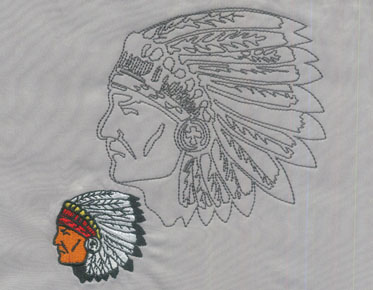Mastering the Running Stitch: an Essential Stitch Type When Digitizing Embroidery
As a digitizer, the running stitch is a fundamental stitch type that you'll encounter in nearly every embroidery project. This versatile stitch is used for outlining and creating fine details, making it an essential stitch to master. In this blog, Eagle Digitizing will bring you to explore some tips and techniques for digitizing the perfect running stitch.
Choose the Right Stitch Length
The stitch length is an essential consideration when digitizing the running stitch. Too long, and the stitch will be weak and may snag on the fabric. Too short, and the stitch may create hard stitches or distort the design. Generally, a stitch length of 2-3mm is suitable for most projects, but it's always best to test the design on a scrap of fabric to ensure the stitch is just right.
Pay Attention to Underlay Stitches
Underlay stitches are used to stabilize the fabric and provide a base for the top stitches. When digitizing the running stitch, it's crucial to pay attention to the underlay stitches' length and placement. The underlay should be slightly shorter than the top stitch to prevent it from showing through.
Consider the Fabric Type
The type of fabric you're embroidering on will also impact the running stitch's digitizing. For example, a running stitch on a dense fabric like denim will need to be shorter than a running stitch on a delicate fabric like silk. When digitizing, be sure to consider the fabric type and adjust the stitch length and underlay accordingly.
Use the Right Software
Having the right software can make all the difference when digitizing the running stitch. Software like Wilcom's Hatch platform provides automation features that can help you remove short duplicate stitches and adjust stitch length and underlay based on the fabric type. This helps you create accurate and production-friendly designs with minimal hard stitches.
Don't Forget Digitizing Theory
While modern software has made digitizing easier than ever before, it's essential not to forget the fundamentals of digitizing theory. Understanding stitch types, objects, and properties can help you create designs that translate accurately and prevent issues when something goes wrong. Combining old-school theory with modern software automation enables you to embroider without limits
The running stitch is an essential
stitch type when embroidery digitizing. In addition to above tips, having a
reliable digitizing partner like Eagle Digitizing can help you take your embroidery designs to the next level. Eagle
Digitizing is a company that provides digitizing and vector art services to help you create accurate and
production-friendly designs. They offer free quotes and advice and can even
provide free format conversions to ensure your designs translate
accurately. With the right tools and
partner, mastering the running stitch is within reach, and you can create
embroidery designs that are both beautiful and production-friendly.


